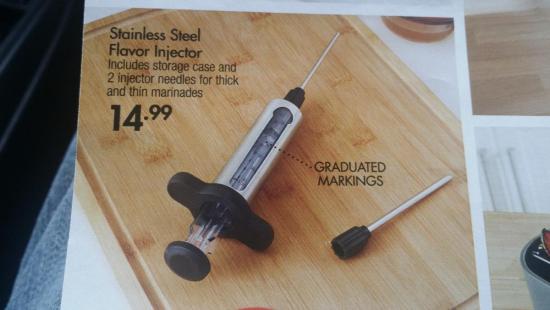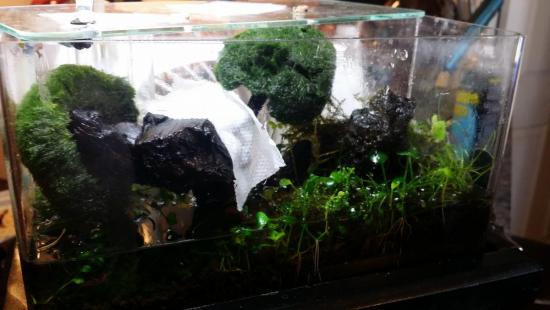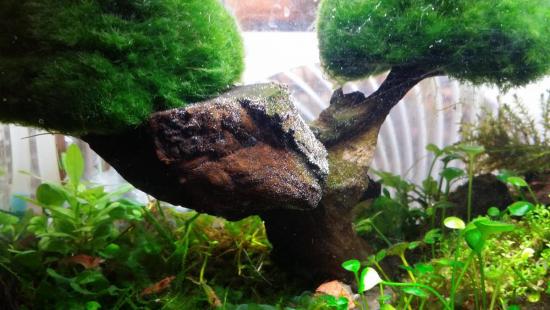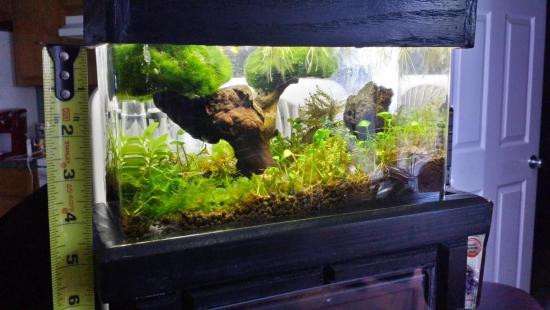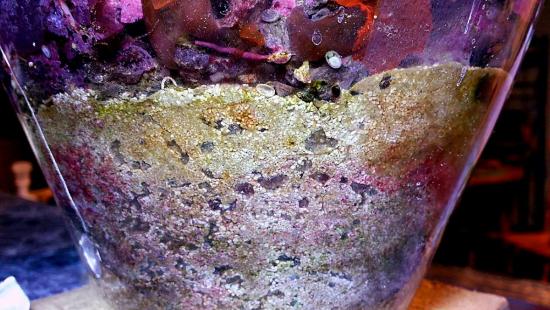-
Posts
63 -
Joined
-
Last visited
-
Days Won
1
Content Type
Profiles
Forums
Gallery
Everything posted by brandonm
-
in these cases above, we see that target kill was the right move not a months long slow starvation process...thats using a preventer where a remover should be used. the pics above show the simplest way we've found to battle algae, cheat when you need to. we are already cheating keeping these animals from a large natural habitat in our little boxes. when you see algae in your tank, your GFO, phosphate management, clean up crew is failing, they aren't able to keep up with eutrophication rates due to lighting and inevitable nutrients we will keep adding so you go in, kill the mass, then stay the course with your secondary water treatments. Dont reactively alter whole tank water chemistry when you get an algae outbreak, natural reefs dont, just graze better, thats exactly what natural reefs do to withstand algae incursion. I have found for sure that we stress corals less overall with a targeted kill w peroxide, vs heavier nutrient stripping which has bleached many a tank as reactive whole tank algae treatments were chosen first. we step in to correct that mode, in these big peroxide threads. natural reefs that would test perfect on our test kits will simply be overrun with many species of algae if you remove the grazers, fact. we are but mere chemical grazers in this thread B
-
This is a powerful and cheap tool for use, its this type of approach we favor over adding mls of peroxide to the topwater: with this simple meat injector, we can turn off pumps and still the tank. The we can inject any clump of algae, slowly, and make less peroxide more effective. Super slow basting inject! others have used diabetic syringes Peroxide has a unique place in aquarium science because its a fairly tolerable oxidizer with known metabolic pathways in almost all respiring organisms from the reef to the lake to the desert, even humans produce it measurably at the cellular level and have enzymes to deal with it, as do many animals. In our case, the list of tolerant organisms vastly outweighs the intolerant ones, so whether we use it in a broadcast manner in the water, or targeted in some of these creative ways its an amazing molecule that seems to target algae in interesting ways. Ive found this to mean its stressing everything in the tank, but 99% have the cellular mechanisms to deal with it and plants do not. Thats how we discovered the amazing usefulness across reef tanks, each person giving feedback over thousands of posts of what succumbed and what thrived after use. Discosoma mushrooms actually begin to reproduce after habituated treatmenst~my vase is now overrun with them but it sure is algae free heh this thread here is another massive, massive peroxide thread with more examples you can see, almost all pertaining to nano reefs. the RC linked thread is mainly large reefs 20-300 gallons i estimate through these threads, and through private PM tank fixes we have used peroxide to correct five thousand aquariums. a straight 5 yrs and more pms are in my inbox right now http://www.nano-reef.com/topic/268706-peroxide-saves-my-tank-with-pics-to-prove-it/page-49
-
Thank you Admiral! I also wanted to drop this in, thought Id already put it up but I guess not. This is the reefbowl where 100% of the peroxide technique I use started and continues, its 9 yrs old and immune to any invader no matter the nutrient levels. Sure the sps are mainly brown but its a gallon give a brother some slack it is hard enough just to get them to stick all over the glass, and, sps from 2006 wasnt all colorful and awesome like it is now for pico reefs lol thanks for participating in our thread everyone, I hope for it to become another giant repository of pictures before, after and during of various peroxide work. it is the handiest tool Ive ever seen in 25 yrs of aquarium work. I use the drain and treat method. drop the water line to zero, spot dose, refill change water again. this is how nanos work best for our treatment, this concentrates the peroxide on the target and then briefly dissolves it in the whole water, only to be changed out again for clean water. this is a tidal motion that cleans out my sandbed too, making it last indefinitely and not pollute the bed. It means the system doesnt have to take on the full capacity of peroxide and slowly expose all the animals to it...even my coral banded shrimp doesnt mind and this is 35% its 6x stronger than whats being used here! B
-
Also want to remind again that our reference thread shows 3-5 ways to apply peroxide that don't involve adding it to the whole tank all at once coral stress can be greatly reduced by simply scrolling through the thread and seeing discussion about underwater spot injections, tank drain treatments where you can simply refill with the same water removed to access the spots, underwater capture tricks using little medicine bottles or mini tarps that hold peroxide onto the target area, and more. I like to keep that in mind to prevent new dosers from just going to a whole tank dose first attempt, when in fact there are much better options to clear algae and preserve corals. Nearly all coral stress can be stopped using the alternate techniques shown in the thread because it uses less overall peroxide in the system, and concentrates more on the target. B
-
I even use peroxide in delicate planted tanks with no problems. I keep high fert and co2 levels in this .5 gallon planted tank so algae also likes it during water change I placed a paper towel wet with peroxide across some spots that were developing algae, to remove it. im working the method on this tank too and it will be algae free its entire life. I take action on the first spot and kill it immediately. decisive action, fast and easy. As time goes by I'm repeating peroxide work far less than the hassle of chasing params I think good params are wise, but to save tedious testing I just do large water changes and attack algae directly. I don't choose to use preventatives, small tanks are easy to zap upon refill, look at the peroxide bubbling off the micro tree stump
-
I even use peroxide in delicate planted tanks with no problems. I keep high fert and co2 levels in this .5 gallon planted tank so algae also likes it during water change I placed a paper towel wet with peroxide across some spots that were developing algae, to remove it. Not to prevent it, im working the method on this tank too and it will be algae free its entire life. I take action on the first spot and kill it immediately. decisive action, fast and easy. As time goes by I'm repeating peroxide work far less than the hassle of chasing params I think good params are wise, but to save tedious testing I just do large water changes and attack algae directly. I don't choose to use preventatives, small tanks are easy to zap upon refill, look at the peroxide bubbling off the micro tree stump
-
Admiral im so sorry but neomeris annulata is the #1 worst reef tank invader I know of, see the middle pages of our thread. We had guys putting ***35%**** peroxide into their tanks and wiping some corals, only for neo to remain strong. others chiseled it out of the rock work to take out any holdfasts, leaving chips and scars along the way. The only thing I know to beat neomeris is the ultimate protocol, nothing beats it: universal exclusion. Coming from someone who fixes lots of tanks Im saying we should reserve neo and a few others for the act of see it, simply remove the entire rock for the life of the tank. Some variants are simply too risky to maintain, and I vote neomeris annulata as the prime one to exclude if ever seen on any rock. trade it off, qt it, boil it etc but simply remove the substrate from the reef when we see it. I class it as only beatable by luck, never repeatable. never ever predictable like what we do in that big thread. I really hated not being able to reliably beat neomeris, we put a lot of work into it where it exists in that thread. I mean a lot of work, guys lost a lot of coral in that battle. But ill claim victory silly documented over green hair algae, invasive macros and brush algae variants.
-
Finbir thanks for posting. Ill tell you this, being labeled a bandaid is what prevents direct action from occurring on algae patches, and that leads to wrecked tanks. direct action on the algae is not a secondary or less preferable method, its a viable solution. Its chemical grazing, and grazing is what prevents algae from taking over natural reefs, not GFO or even nutrient management. Its well documented on reefs that once we remove the grazers, the urchins, the parrots, the ________ algae will dominate. caulerpa can dominate, how well does taking indirect action work for caulerpa control in wild invasive patches? not well I dont think every tank should use peroxide. Its merely a handy, and highly predictable cheat for the times its indicated. Im an advocate of total control, simply dont permit algae. Before someone showed me peroxide, I was literally fire burning algae off my reef like this: We were simply told incorrectly that attaining nutrient level _________ guarantees you a no algae tank wrong, it may help, and does as a nice preventative, but its never the solution to an existing algae problem. That solution is make the algae gone yesterday, then employ a preventative to prevent. as soon as we see invasive species X on our reefs, the clean up crew is failing. the nutrient control, no matter how low the phosphates are registering, is failing. strain it much more and we'll starve and bleach our corals who also need nitrate and phosphate for coloration and health. You can see in my thread a huge, huge portion of those tanks were already employing the nutrient limiter of the day and still had X invading their tank. our method is used to fight nearly any form of plant invader, except neo The point of this peroxide thread is: preventatives are GFO, refugiums, clean up crews, turf scrubbers, etc. things that keep the water in check removers are: fire, peroxide, bleach, even just hand removal. something thats decisive. something that repeats, and just because it repeats doesnt mean it cant be used to literally stop an algae invasion. i document in that big thread several tanks of perfect water params that still had even basic Green hair algae problems, something supposed to be strictly nutrient related but wasnt (in the water column) we use peroxide to mass clear biomass that would otherwise take weeks to starve, then your preventers have a real shot. without overstripping the water in retroactive haste. it has no bearing on neomeris annulata
-
I really like the input on this thread just after a few mos this is exactly how peroxide threads get so large, building upon last application technique with pics Before we dump large amounts in the tank (as you can see mostly safe, no biofilter death as once assumed etc) be SURE and read this 4 yr thread on what peroxide does in your tank, before you dump We have one to many thousands of dollars in these tanks and vs a large dump repository, at least read what many others across the globe did with large tanks vs full addition to the running tank we have tanks where the keeper installs a little underwater tarp made out of think plastic wrap, secures it to a troubled rock, and then injects peroxide only up under that tarp, lessening contact to sensitive organisms. then we have tank drains + treatment, which is what i do is my massively old and small 1 gallon vase reef, the system that made the data for the entire thread below where tanks up to 450 gallons were treated. So as you can see above, clams, nitrifying bacteria, a multitude of soft and stony corals, all are pretty tolerant of peroxide but from this giant thread below, these are not: 1. lysmata cleaner shrimp species and blood shrimp will almost always die when exposed to any dilution. I suspect it has something to do with heritable traits in that species regarding free radical metabolism details, they just cant tolerate. Lysmata cleaners are the single most peroxide weakest animal Ive ever seen in 5 years of hardcore, hardcore peroxide tank work. 2. zoanthid corals are probably the toughest, nearly immune to any form of peroxide treatment 3. anemones can suffer (you can see this in discosoma irritation, the recovery) 4. decorative macro algae for obvious reasons (we use peroxide to wipe clean dictyota infestations, caulerpa infestations on a large scale) 5. xenia is usually wilting when putting in full tank doses, which is why underwater capture methods work so well 6. coralline w usually bleach out then come back This is the biggest thread on the web for peroxide use across tanks, I even use it the same way in my many planted tanks: http://www.reefcentral.com/forums/showthread.php?t=2082359 that being said, its clear that tankwide treatments work and require very little effort, told you it was an amazing technique :)
-
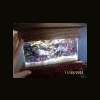
8 year old 1 gallon reef, 12 yr old planted sphere (19")
brandonm replied to brandonm's topic in Members Tank & Specs
http://imageshack.com/a/img537/5871/y36Yfd.jpg Updates -
Wow. This is fascinating. Was thinking of starting a pico tank in my office! Glad that I stumbled across it. Forgot the know how of starting a marine tank after so many years. But I guess I can always pick it up again Time to shop for a suitable tank!
-
in every way our example thread advises creativity and going the extra mile in water changes to make up for the care situations that caused the algae. You could elect to change 40% of the water for three days in a row after the new setup just to ensure safety, export those nutrients that are liberated into the water column during a tank move, etc. consider it cpr, how many chest compressions is your reef worth? mines worth the most, 100%, done every week for nine years. the more water changes you do, without stirring up deep sand bed waste and by exporting detritus at every interval, the longer your small reef will live in terms of years. typically people will recommend you install and use GFO as an adsorbtion media for your small reef tank, in small quantities, as a phosphate stripper to prevent or lessen regrowth. peroxide is an ideal tool to catch up, and stave off early invasions while you tune the preventatives better.
-
that sounds like a good plan, the safety of the sensitive shrimp will depend solely on your rinse. peroxide wont be effective in an aquarium just several hours after being diluted, the amounts we use, so your shrimp stress from the actual move would be the action to consider. we dont want a double insult of stress move+peroxide, so as a twofold safety approach I recommend you rinse the rocks extremely well in clean saltwater before adding to your newer tank, and add the shrimps the next day. qt them for 24 hours after your scrubbed rock has been added, there's no way peroxide will be a factor at that point. it is a good idea in this case to manually remove the biomass first, then treat, good call. In our example thread it was almost always the other way around, but thats for picture effect we want to leave the least possible algae in the system to fragment and reseed around the tank, so indeed remove as much as you can and the peroxide will hit whatever was left in the rock. future prediction: be ready for a comeback. moving tanks upends nutrients in the lower areas of the tank and can frequently cause algae issues for some time afterwards, deal with it as you please but do expect some comeback tufts from things we missed during this work. Perhaps you could aquascape your tank in such a way that these rocks are removable for the first few months, anticipating this prediction and required action. What peroxide is doing for you on this first run, is chemically killing a huge amount of this mass you would otherwise leave rooted in place by using physical-only removal methods, its still very helpful. Please take before pics of the rocks in the worst condition, and then updates a week or two after so we can begin to get pics for this thread!
-

8 year old 1 gallon reef, 12 yr old planted sphere (19")
brandonm replied to brandonm's topic in Members Tank & Specs
Hello friends thanks for stopping in Very happy to field that question, about the old tank syndrome. That is such a crucial matter to all sand bedded reef tanks, and you already know it is amplified orders over in a one gallon reef that is close to ten years running without being ever taken apart. I have some time at work so I like to expound a little to get us to thinking about alt applications of this kind of reefkeeping method, see what you think of this. There are some rules that can be broken in reefkeeping and some that can't. one that cannot be broken is something called eutrophication which is a tipping point we've all seen in older tanks that makes stored up nutrients outpace grazing activities and algae mass is often the first sign. typically the OTS involves gas issues when factoring in 90's style deep sand beds (what I use here, a reef child of the 90s lol) with the potential deadly gasses being hydrogen sulfides and massive sinking of phoshpate within the latticework of any calcium carbonate structure in the tank... everything basically. we are working in some creative manner against that condition always in reefing, and in overdrive for tiny tanks So, one unbroken rule is detritus can't break down fully in a tank, it stores up and we'll pay a price for that in time. we outpace mineralization far too fast for what we stock. Keeping one coral frag in a thousand gallon tank as the only source of waste for the tank might be a better approximation of the dilution rates that make detritus breakdown something viable for a no export tank, but for how we reef, we must remove detritus. out of sight is not out of mind just because a sandbed looks clean, its storage mess so, this rule seems daunting. its wrecked many a tank, matter of fact the strongest reefers you know (Randy Holmes Farley for ex) and the top posters in forums who have time under their belts will tell you that a sinked up sandbed is a tank killer and thats why they went and are going out of style, for good reason. -but- they will not say its impossible to keep a sandbed going, forever, its just usually too much work for the large tanks everyone keeps (we are all advised to avoid small tanks) thats where rule bending comes into play. My sandbed is as clean now as it was the first year lets say for comparisons sake. how did I age a sandbed up to one years worth of random detritus deposits, then freeze that condition never to increase again for the life of the tank? before reading on, rack your brains to try and figure it out, its so simple. what makes my sandbed stop storing all waste, even though Ive fed this tank no less than five pounds worth of frozen cyclopeeze? This is a practice in rule bending by creativity because it makes you a STRONG reefer who commands how long your tank lasts, its not some random figure where OTS pops up in year three and your whole tank crashes. there is -some- simple inversion of care you do that changes -everything- about the rules, and its only handy because these tanks are small. if they were large, it'd be too much work. what is it its water changes, but not how you are thinking. its like this: my water changes are 100% like a real fringing reef. you all know the reef is divided into zones, and you dont have to constantly mimic the calm underwater one to keep corals./ thats the zone that stores up detritus, in the ocean sand sink, so dont model that and thats the key. model the fringing reef!!!!!!!!!!!!!!!!!! <----MAKES OTS IMPOSSIBLE, FOREVER NOT GOING TO HAPPEN IN MY TANK I use caps only for emphasis and fun lol. so, I model the portion of reef that gets waves slammed against it and is often out of water for extended periods. I drain my bowl empty for 10 mins once a week, that many mixed corals and shrimp, in the air for ten minutes. no minicycling, everything adapted to fringing reef models because thats what an animal gets when it gets put into my bowl. adapt or die. they adapt. the friginging reef is a flushing reef, it doesnt store up suspended waste it carries them out as floc and foam on the beach for deposition, or it redistributes with great energy those waste particles out to other calmer settling areas (the kind of tank we all mimic because we were told untruths such as air kills live rock or coral, or mini cycles occur because of air on and on) its not just big water changes, its the feed timing. how were we all told to feed a small reef? a tiny pinch a day to not poison it. <----following that model, searching the entire world online and in print, guess how long you can find a reef below 3 gallons staying alive where you can prove it with pics and vid? 3 years. Mines almost 9, and its 1/3 of the size and has pumped out more coral frags than any nano you know. Why are we told to do it that way? because we take rules from people who do not invent pico reefs, they take examples from large tanks and try to downsize it. Which means you leave the 3 gallon nano slowly storing up waste every day until it crashes. I think opposites to solve problems. I never, never, feed mid week. I feed once a week a huge amount of mixed frozen reef food that is enough for a 20 gallon tank, into a one gallon pico. (but that will store up your sandbed fast!!!!!!!!!!!!!!!!!) nope, I dont leave the waste in the tank I grossly overfeed weekly, grossly, and the corals eat like pigs. the rocks are covered in unused food (getting eaten by pods too) and unused food is strewn among the rocks and sandbed. but then comes the tide a huge ripping water change takes it all back out, leaving only fat corals and thats how you smash, break, destroy pico reef rules to get what you want. mimic a different oceanic zone and everyones happy lol but earlier I said I grew out the sandbed for one year and then paused it, here's why. thats a six inch sandbed in a tiny vase, things poop, some food gets left in the cracks, so following the undeniable rule of waste sinking -some- waste gets down into my bed. some...a tiny, tiny bit. and you can see in the detailed pics where some areas are more golden than others, indicating some light algal films that feed on this localized detritus penetration. but its not out of balance because of the final unspoken secret to controlling any tiny reef, its another rule break. Fringing reefs dont change water like wimps. 20% every other week is guaranteed to kill your pico reef, so dont do it. I do opposite, again once a year I set my tiny reef in the sink, and from one foot above the tank I pour in 10 gallons, thats 10x 100% water change all in two minutes, and the outflow is violently shaking up the -top layers- of that sandbed where detritus will collect, even in spite of my weekly feedings and its overflowing into the sink. imagine that, instead of fearing the reef animals being wimpy, and following 1990's care standards that made all reefs die quick, we simply do opposite of everything they said and change reef keeping permanently moi_dar this is a fine tutorial w pics lemme know what you think! http://www.nanoreefblog.com/features/pico-reefs/the-history-of-pico-reef-biology I didnt type all this to give you all a headache it is such a long response because thats how much thought goes into these reefs, I did the first micro reefs sustained you can locate anywhere and I had to lose a lot of them to eutrophication and algae years into their growth in order to learn from the mistakes of reefing past, and make some new rules. I have killed, eliminated OTS even if my sandbed takes up 90% of the mass of the bowl, so there you go. Lastly, this is a big deal. im out of time typing now but we need to factor this, this technique is why my bowl is alive its not just the water changes. read this entire thread if you never want to lose a reef tank to algae again,any size reef tank http://www.reefcentral.com/forums/showthread.php?t=2082359 ***Algae grows in spite of your care methods. I can show you GFO 0/0/0 tanks that have it, the oceans have algae problems when the grazers die off even though they have low phosphate waters, so you must have a plan for algae removal/ Not algae prevention, removal. No matter what you do in pico reefing, at a certain age the algae will begin even if you cared for your setup well (100% weekly water changes for example) -because- of the firm unbreakable rule of eutrophication. as a rule, introducing feed into your tank in any manner is leaking some phosphate into the tank, and thats being bound up by the various substrates, coral skeletons, anything with a CaC03 matrix, phosphate wants in that (then bacteria release the phophate slowly into the tank below testing levels, so you get algae) knowing that algae is a likely factor in spite of my care, I developed a kill system to simply cheat burn it out of my tank and now I dont test nor care for phosphate its a long read, but if you read those links your reefing will change forever. B -
my thread down below this one will fix it.
-
Hey can you post a full tank shot and we will throw out some customized approach Skimmer is expected to increase skimmate output because peroxide will bring organics into suspension and out the tank faster than normal via skimming. In most of the cases they wanted to dose full tank, we saw easier ways to remove sections of treatable rock simply because treating the sections outside the tank allowed for a direct spot treat of the algae
-
That depends on what system you test the addition of peroxide with orp monitors, and how someone chooses to interpret variance data relative to what is good or bad for our tanks. opinions vary bigtime im no chemist but in getting bashed by many while promoting peroxide some things were picked up added to a glass of distilled water on the counter? sure added to a years old reef tank with heavy organic waste reserves, not so the chemistry and immediate/lasting effects are markedly different where peroxide attracting compounds are present, they affect its lifespan in the water and dissipation rates, and this begins some of the interesting push/pull that is peroxide use in the reef tank. interesting: decades of peer reviewed data exist to show how organic compounds react with hydrogen peroxide. You will find organic sludge digestion works for Lake and stream management, well known biochemistry pathways, and lots of reading on the matter. Now try to find one instance regarding peer reviewed journal published work on peroxide effects in the marine aquarium and you'll find a void contributing to the push/pull... We don't have references to chart this aspect of marine tank husbandry, but considering peroxide has a fifty year history in freshwater its not a blind push either one of our linked reference threads within that thread above is a thread from reefcentral 2009 where boomer, a highly respected chemist and poster, is talking in a thread about why orp dropped, not raised, in a reef tank when peroxide was added. It was a paradox worth linking but they never really related that variance data to why we fixed so many tanks with something theoretically so bad? I think you get an initial brief spike in some systems, and not in others, and in the end neither really mattered to the microbiology, chemistry and stasis for the tank. opinions vary and I'm biased
-

8 year old 1 gallon reef, 12 yr old planted sphere (19")
brandonm replied to brandonm's topic in Members Tank & Specs


